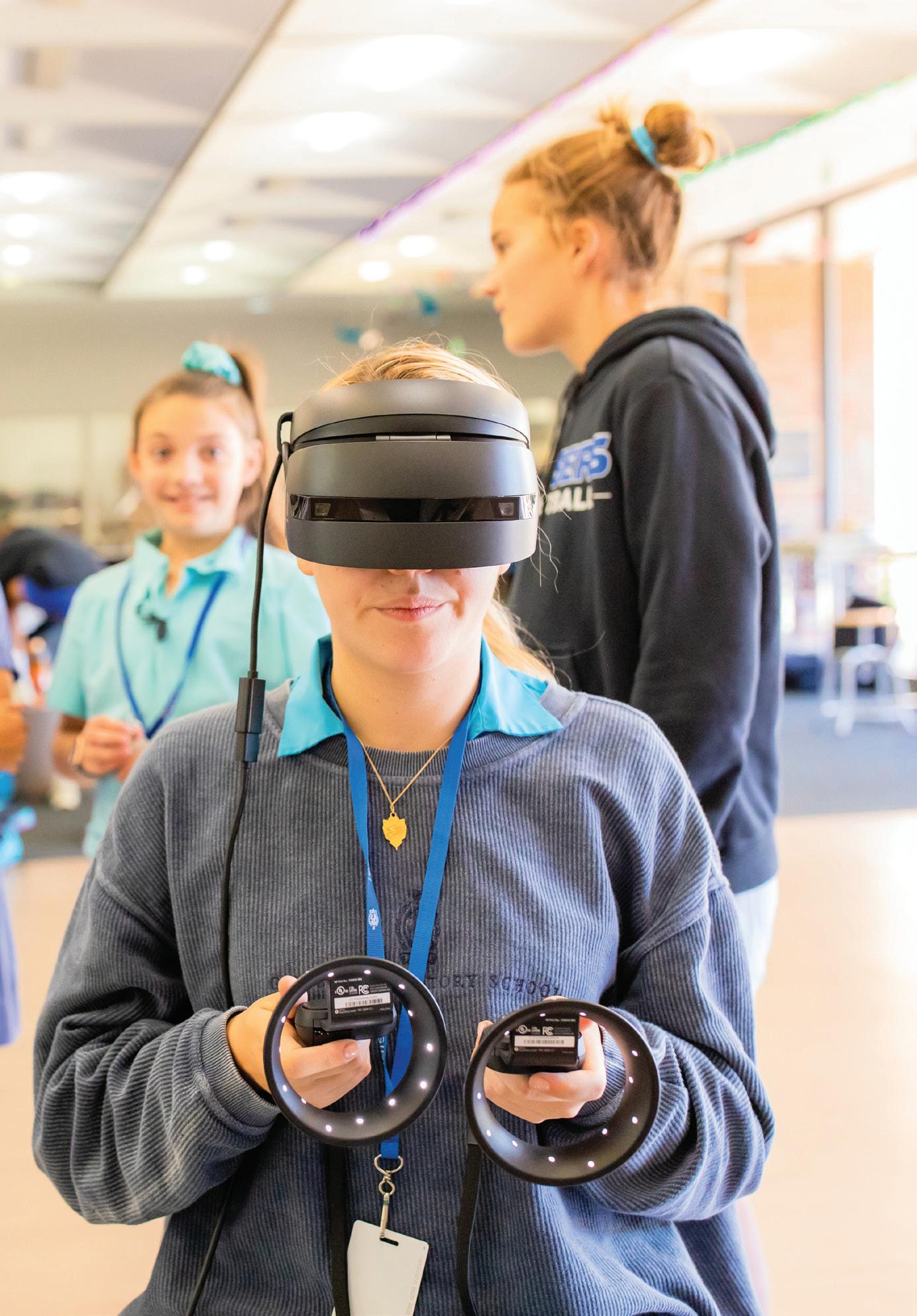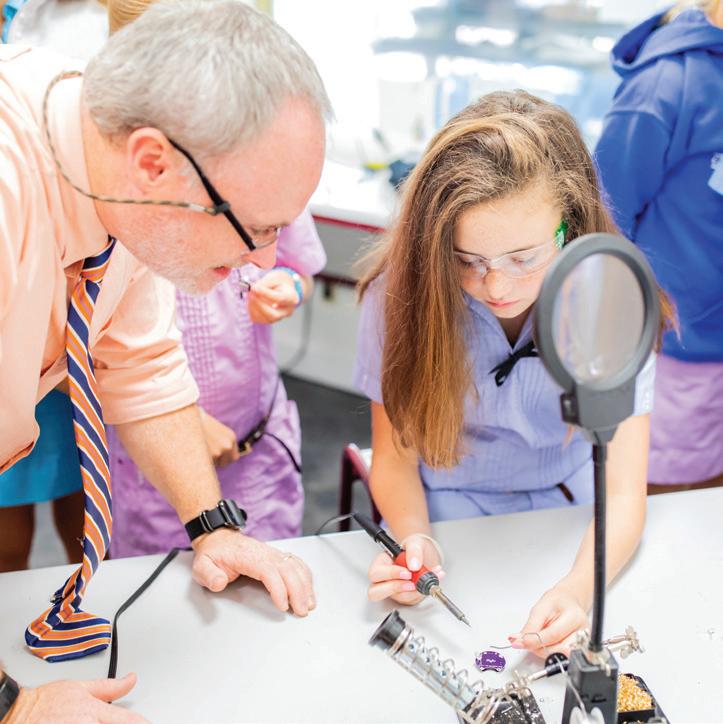
3 minute read
STEM: Science • Technology Engineering • Math
At GPS, we have changed the narrative in STEM, particularly as it applies to girls. Our students discover a passion for and go on to pursue degrees and careers in STEM fields at more than five times the national average rate. Of GPS alumnae from the classes of 2011-14 who have graduated college, 38 percent received a degree in a STEM field.

Each Middle School student uses an iPad across her curriculum.
Our STEM Learning Philosophy
Our goal is for all students to gain a mastery of foundational STEM skills that will empower them as global citizens and future contributors in whatever field they choose.
» Start early | We expose girls to STEM in sixth grade to increase familiarity and fluency. While opportunities in STEM increase throughout Middle School, it is important for girls to remain confident in themselves and their abilities in STEM subjects.
» STEM for all | Each girl benefits from the skills obtained in STEM class, and girls can choose projects that align with their interests and passions— from designing a hoverboard car to 3D printing virtually designed pottery.
» Yes you can | We embrace the power of YET, changing the narrative from “I’m not good at math” to “I’m not good at math YET!”
» Better together | Problem solving is done in a collaborative setting to which girls are naturally drawn. Students are encouraged to work in teams, creating a positive and supportive environment where risk-taking and failure are safe.
» Keeping it real | Courses focus on human-centered instruction by involving mentors and solving real-world problems.
» Inspiration for aspirations | Girls are inspired through interactions with women in a wide variety of STEM careers, including GPS alumnae who often return to campus to meet with them.
» Low-stakes options | Our clubs, enrichment opportunities, and an ungraded STEM elective allow girls to take risks, problem solve, try new things, and explore areas of interest without focusing on perfection.
» Hands-on, real-life | STEM at GPS is designed to maximize learning through approaches that leverage how girls think, feel, and behave. They are instructed to be planful but not overly cautious, and to be open to a messy process as they make allowances for the unexpected.
» Problem-solving and critical thinking | Students are exposed to myriad problem-solving opportunities and real-world applications of knowledge and skills in math and other STEM classes.
» Lab-based sciences | Students learn to identify problems, design experiments and explorations, analyze data, and draw scientific conclusions.
6.7% of women who earned a degree in a STEM field nationally
ROX (RulingOurExperience.com)
38% of GPS alumnae who received a degree in a STEM field between 2011 and 2014
National Student Clearinghouse
Middle School Computer Science & Engineering At A Glance
Discover Computer Science | Sixth Grade Intro to concepts such as computational thinking, algorithm development, logic, and program design
Design and Discovery | Seventh Grade Incorporates computer science, technology, and engineering principles to emphasize research, teamwork, digital organization, creativity, and problem-solving skills
Digital Makers Elective | Eighth Grade Harnesses the technology GPS has to offer to help students manufacture a product using tools such as iMovie, littleBits, and 3D printers
STEM Elective | Seventh and Eighth Grades A deeper dive into design thinking and prototype creation using virtual reality, video, animation, podcast production, 3D printing, drone programming, and robotics

Library and Makerspace
No limits to what she can do! GPS students benefit from one of the best-equipped libraries and makerspace studios in the region. Here everything is hands-on—from the books and 3D printers to the robotics studios. Girls can “play” and learn with anything they can imagine, thereby increasing their mastery and confidence with technology.
Our library and makerspace include:
» Databases including EBSCO Discovery Serviceservice
» Library book collection: 9,156 nonfiction, 5,258 fiction, 861 multimedia, and 180 new books added annually
» Nine virtual reality stations with software integration across curricula
» 3D printing studio with six Taz printers and eight mini printers
» Makerspace including a laser cutter, drill presses, cordless hand tools, CNC machine, glassworking band saws, vacuum former, tile saws, and hot glue guns
» Podcast studio with mixing board and computer with audio recording/ editing software
» Video production studio with green screen and animation capabilities
» Robotics studio with Lego Mindstorm EV3 robots, Spheros, Mini Spheros, remote control vehicles, 22 coding drones, a wide variety of small and large drones, and 12 soldering stations as well as a wide variety of electronic components
» Woodworking equipment including a wood-turning lathe, scroll saws, and desktop belt sander











